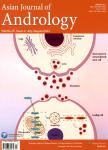Challenges and improvements in testosterone and estradiol testing
【特刊综述】睾酮和雌二醇检测方法面临的挑战和取得的进展作者机构:Clinical Chemistry Branch Division of Laboratory Sciences Centers for Disease Control and Prevention Atlanta Georgia USA.
出 版 物:《Asian Journal of Andrology》 (亚洲男性学杂志(英文版))
年 卷 期:2014年第16卷第2期
页 面:178-184,I0006,I0007页
核心收录:
学科分类:10[医学]
主 题:CDC hormone standardization CDC HoSt estradiol steroid hormone testing testosterone
摘 要:Assays that measure steroid hormones in patient care, public health, and research need to be both accurate and precise, as these criteria help to ensure comparability across all clinical and research applications. This review addresses major issues relevant to assay variability and describes recent activities by the US Centers for Disease Control and Prevention (CDC) to improve assay performance. Currently, high degrees of accuracy and precision are not always met for testosterone and estradiol measurements; although technologies for steroid hormone measurement have advanced significantly, measurement variability within and across laboratories has not improved accordingly. Differences in calibration and specificity are discussed as sources of variability in measurement accuracy. Ultimately, a combination of factors appears to cause inaccuracy of steroid hormone measurements, with nonuniform assay calibration and lack of specificity being two major contributors to assay variability. Within-assay variability for current assays is generally high, especially at low analyte concentrations. The CDC Hormone Standardization (HoSt) Program is improving clinical assays, as evidenced by a 50% decline in mean absolute bias between mass spectrometry assays and the CDC reference method from 2007 to 2011. This program provides the measurement traceability to CDC reference methods and helps to minimize factors affecting measurement variability.



